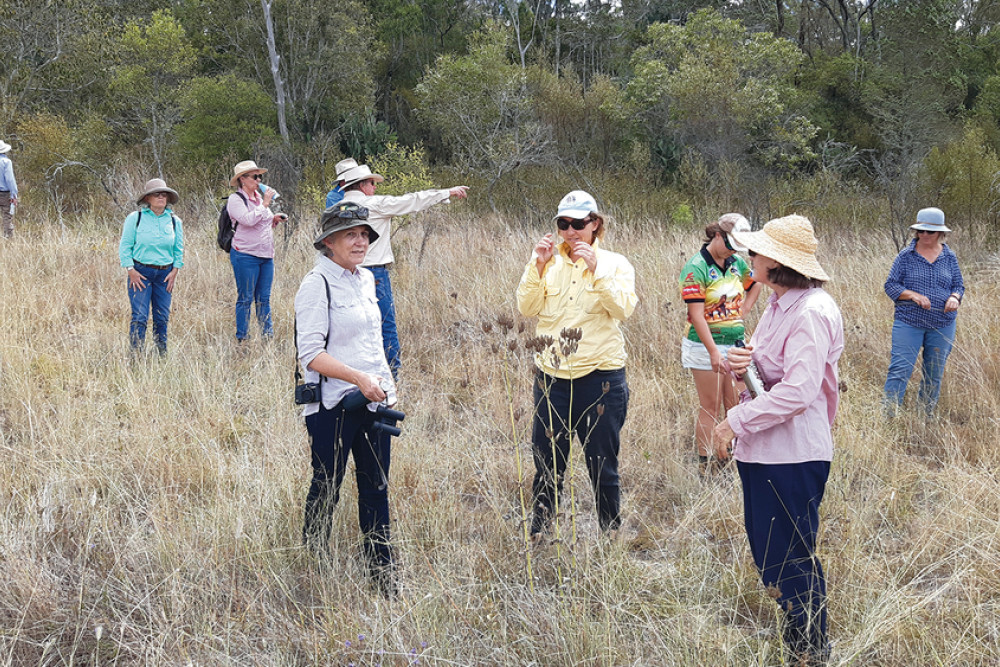Community & Business
22 March, 2023
Call for help on our native grasslands
We need to better protect and manage our native grasslands - that was the clear message of the recent grassland tour hosted by Pittsworth Landcare, which attracted 28 interested landholders and scientists.

In her introductory presentation, University of Queensland botanist Jen Silcock said only one per cent remained of Darling Downs grasslands, which were glowingly described as wonderful pastures by early European explorers and settlers.
Allan Cunningham, for example, wrote in his 1827 journal of ‘extensive tracts of timberless lands… not wanting in water’.
Almost 200 years later, virtually all those native grasslands have been destroyed by agricultural, transport and residential developments, and by altered fire regimes and introduced species.
Only small fragments remain, unconnected, along roadsides and on poorly managed reserves.
One such area visited on the tour earlier this month was the Cambooya Grassland Reserve, where Cambooya Landcare chair Kate Reardon-Smith out-lined the reserve’s history and management efforts and problems.
Dr Silcock said the small reserve, even though it looked unremarkable and had infestations of introduced weeds, actually protected dozens of native species.
The group also went to McEwan State Forest, 8 kilometres north of Pittsworth, where the inter-relationship between grass species and woodland was evident.
Dr Silcock outlined a number of best grassland management practices for landholders and councils, including non-disturbance of soils, restricted grazing and introduced weed control.
Up to 70 animal species on the Darling Downs are listed as threatened or endangered, perhaps destined to share the same extinction fate as the paradise parrot and Darling Downs hopping-mouse.
Numerous plant species are similarly threatened, including the pretty daisy Picris evae and the showy austral cornflower Rhaponticum australe.
Dr Silcock said the cornflower had disappeared from almost half of the dozen sites she’s been monitoring over the past 15 years.
The tour was co-ordinated by Southern Queensland Landscapes with funding support from the Australian Government’s National Landcare Program.


